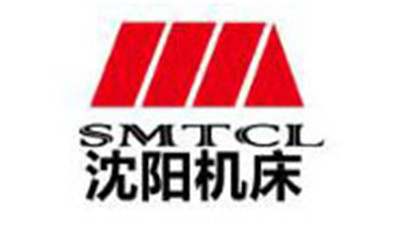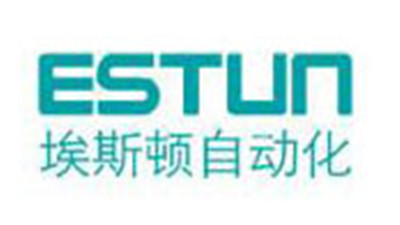Understanding Problems Associated with Earthing Transformers in Power Systems
Table of Contents
- Understanding the Role of Earthing Transformers in Power Distribution Systems
- Key Challenges Faced by Earthing Transformers in Modern Electrical Grids
- Impact of Unequal Loading on the Performance of Earthing Transformers
- Statistical Insights: Failure Rates and Maintenance Costs of Earthing Transformers
- Best Practices for Ensuring Optimal Performance of Earthing Transformers
- Emerging Technologies in Earthing Transformer Design and Implementation
- Exploring the Impact of the Global Industrial Transformer Market Growth on JBK Industrial Control Transformers: Insights from Recent Industry Reports
- FAQS
- Conclusion
- Related Posts
In today's modern power systems, the importance of Earthing Transformers can't be overstated when it comes to keeping things safe and running smoothly. As electrical networks grow more complex these days, making sure we keep everything stable with good grounding solutions is more crucial than ever. The IEC (International Electrotechnical Commission) highlights that a well-designed earthing system can actually cut down equipment failures by up to 70%, not to mention boost overall power quality.

On that note, Dezhou Xinping Electronics Co., Ltd.—a high-tech company founded back in March 2001—has been specializing in making all sorts of precise electronic transformers, including those trusty Earthing Transformers. Their focus on innovation and quality really puts them ahead, especially as industry standards keep evolving and the demand for reliable earthing solutions continues to grow.
In this blog, we’ll take a closer look at some of the common issues related to Earthing Transformers in power systems and compare different approaches to help you get the best performance out of them.
Understanding the Role of Earthing Transformers in Power Distribution Systems
You know, earthing transformers are pretty much the unsung heroes in power distribution systems. They’re crucial for keeping things safe and stable. Essentially, they give us a neutral grounding point, which helps prevent overvoltage problems and makes protection systems work smoothly. The IEEE Power and Energy Society has pointed out that if earthing isn’t done properly, it can lead to equipment failures—costing utilities a ton of money in outages and repairs they really don’t want. Installing earthing transformers can boost the overall reliability of the system, especially in setups where grounding isn’t straightforward, like ungrounded or high-resistance grounded systems.
One thing these transformers do really well is limiting fault currents during short circuits. A big study from CIGRÉ (that’s the International Council on Large Electric Systems) found that systems lacking effective earthing are about 30% more prone to equipment damage when faults happen. So, by using earthing transformers, you’re not just protecting equipment—you’re making the whole operation safer and more reliable.
Quick tip: Make sure to check on your earthing transformers regularly. Testing the ground resistance now and then is a smart move—it helps keep everything up to standard and ensures your system stays safe.
Another tip: When you’re designing a new power distribution setup, don’t forget to consider the local soil conditions and environmental factors. These might seem small, but they can really influence how well your earthing transformers perform. Planning ahead like this can save you a lot of headaches later and help your system last longer.
Key Challenges Faced by Earthing Transformers in Modern Electrical Grids
Earthen transformers are pretty essential in today’s electrical grids, especially when it comes to keeping things safe and stable. But, of course, there are a few hurdles that need tackling if we want them to work at their best. One big issue is how the insulation materials tend to wear down over time, especially under heavy loads and in harsher environments. According to a recent report from the Electric Power Research Institute (EPRI), over 60% of these transformers end up failing earlier than they should—mainly because their insulation breaks down. That can lead to unexpected outages and higher maintenance costs, which nobody really wants.
And it’s not just insulation issues. With more renewable energy sources like wind and solar coming into the mix, we’re also seeing a bit more fluctuation in power quality. The National Renewable Energy Laboratory (NREL) points out that as these sources get integrated into the grid, they can create harmonic distortions—kind of like electrical noise—that can mess with transformer efficiency and even shorten their lifespan.
Here’s a tip: keeping a close eye on these transformers through regular checks and maintenance can really save you headaches down the line. Putting in condition monitoring systems to track temperature and moisture levels helps catch problems early, before they turn into costly failures. And, honestly, making sure your team understands the specific challenges that come with integrating renewables can make a big difference in how smoothly everything runs.
Impact of Unequal Loading on the Performance of Earthing Transformers
Unequal loading in power systems can really throw a wrench in how well earthing transformers work, and let’s face it, these transformers are pretty important—they keep things grounded and safe. When power isn’t split evenly across all the phases, it causes voltage imbalances that can mess with the transformers’ performance. Researchers have shown that these imbalances shift the transformers’ operating points, which means they don’t work as efficiently as they should. Over time, this not only hampers their ability to do their job but also creates potential risks for the whole power system—like overvoltages and extra losses, you know?
And in today’s world, where smart microgrids and flexible energy setups are becoming the norm, load management gets even trickier. Microgrids can switch loads on and off pretty easily, which means keeping everything balanced isn’t always a straightforward task. As these loads change, making sure the grounding systems are properly designed and monitored becomes super important—otherwise, we risk losing system reliability or damaging equipment. So, engineers really need to watch their systems closely and plan accordingly so we can enjoy the benefits of modern energy grids without putting the whole system in jeopardy.

Statistical Insights: Failure Rates and Maintenance Costs of Earthing Transformers
Earthing transformers are pretty important when it comes to keeping power systems safe and running smoothly. But, you know, it’s also really important to understand how often they fail and what maintenance costs are involved—that way, you can manage risks better. Recent data shows that failures in these transformers can lead to quite a bit of downtime and push maintenance costs up. For example, on average, failure rates hover around 5% to 10% each year, though this can vary pretty a lot depending on environmental and operational conditions.
In the bigger picture of the energy world, where conditions are often intense and demanding, making sure these earthing transformers are in top shape isn’t really optional—it’s crucial. Interestingly, studies suggest that with solid maintenance plans in place, failure rates can actually be cut down by nearly 40%. And with maintenance costs climbing, it’s more important than ever to leverage digital tech and predictive maintenance tools. Using new stuff like AI and real-time monitoring, companies can stay better prepared and, hopefully, see a big drop in failures and related costs. Taking this kind of strategic approach not only boosts reliability but also lines up with the industry’s push toward digital transformation in managing assets—that’s the way forward, for sure.
Best Practices for Ensuring Optimal Performance of Earthing Transformers
When it comes to earthing transformers, getting the grounding right is pretty much non-negotiable if you wanna keep your power systems running smoothly. A report from IEEE actually points out that around 30% of transformer failures are due to poor earthing practices — pretty eye-opening if you ask me. Having a solid grounding setup not only keeps your equipment safe but also makes the whole system more stable and safer to work with. Picking the right earthing strategy can really cut down on those annoying transient voltages and help manage fault currents better, which is a game-changer.
To keep things running at their best, it's super important to regularly test and keep up with maintenance on your earthing systems. IEEE actually suggests that your earthing resistance should stay below 5 ohms to do its job properly during faults. And, using materials that resist corrosion can really make a difference and help your system components stay in good shape longer. Data from the IEC also stresses the point that routine inspections can help catch weaknesses before they turn into big problems — saving you from costly failures and downtime. If utilities focus on following these best practices, they’ll actually improve system reliability and efficiency, which means a safer place for both equipment and the people working on it.
Performance Metrics of Earthing Transformers in Power Systems
This chart represents the performance index of different earthing transformers in power systems. The performance index is a metric that reflects the efficiency and reliability of each transformer, indicating their optimal functioning within the electrical system.
Emerging Technologies in Earthing Transformer Design and Implementation
You know, new tech in designing and deploying earthing transformers is really shaking things up in the electrical world. They're coming up with smarter solutions that help tackle old-school grounding issues. For example, recent strides include adding digital monitoring systems—machines that give us real-time updates on how transformers are performing. A report from the International Electrotechnical Commission (IEC) even says that using condition-based monitoring could cut maintenance costs by about 30%. That’s a big deal because it makes power systems more reliable and ready to go when we need them.

On top of that, there's some exciting stuff happening with hybrid earthing transformer designs. These mix traditional grounding methods with new materials and smarter shapes. Stuff like synthetic insulating materials or better core designs can make these transformers run more efficiently and cut down on energy losses. The IEEE Power and Energy Society even suggests that these new designs could boost operational efficiency by around 15%. With everyone's push for cleaner, more efficient power, these emerging technologies are going to be key in solving some pretty tricky issues with earthing transformers.
Exploring the Impact of the Global Industrial Transformer Market Growth on JBK Industrial Control Transformers: Insights from Recent Industry Reports
The global industrial transformer market is witnessing robust growth, driven by advancements in technology and increasing infrastructure investments. This expansion significantly impacts specialized transformer manufacturers, particularly in the realm of JBK Industrial Control Transformers. Recent industry reports highlight how JBK transformers, designed for applications in various sectors, align with the evolving market trends and the demands of modern industries.
JBK5 transformers are well-suited for AC circuits operating at frequencies of 50 to 60Hz, with rated voltages not exceeding 1140V for both input and output. Their versatility renders them invaluable in a wide array of applications, such as controlling power supplies for NC machine tools, elevators, packing machines, LED lighting, and even agricultural machinery. With their robust construction and reliability, JBK transformers support critical operations across different sectors, enhancing efficiency and productivity in industrial processes.
As industries strive for modernization and automation, the demand for advanced transformers like the JBK5 is set to increase. Their capacity to withstand significant operational demands while providing stable, controlled energy supply makes them essential for emerging technologies, including robotics and LED solutions. By leveraging insights from recent reports, businesses can strategically invest in JBK transformers to capitalize on the growth opportunities within the global industrial transformer market.
FAQS
: Earthing transformers provide a neutral point for grounding, mitigate potential overvoltage issues, and facilitate effective protection coordination, thereby ensuring safety and stability in power distribution systems.
Earthing transformers limit fault currents during short-circuit conditions, reducing the likelihood of equipment damage and improving overall operational safety, particularly in systems without effective earthing.
Inadequate earthing can lead to equipment failures, which may cost utilities millions in unscheduled outages and repairs, as systems without proper earthing are more susceptible to damage during faults.
Unequal loading can cause voltage unbalances, shifting the operational effectiveness of earthing transformers and leading to increased losses and potential overvoltages, compromising both the transformers and the overall power system.
Emerging technologies, such as digital monitoring systems and hybrid designs, are reshaping earthing transformer design by providing real-time performance data and enhancing efficiency, thus addressing traditional grounding challenges.
Implementing condition-based monitoring can lead to a 30% reduction in maintenance costs, significantly enhancing the reliability and availability of power systems.
Factors such as local soil resistivity and environmental conditions should be considered in the design to optimize earthing transformer performance and prevent future complications.
The development of hybrid earthing transformers using synthetic insulating materials and optimized core designs has shown promise, potentially improving operational efficiency by up to 15%.
Regular maintenance checks are essential to ensure the functionality of earthing transformers, including periodic testing of ground resistance to comply with industry standards and maintain system safety.
Conclusion
Hey, have you ever read the blog titled "Understanding Problems Associated with Earthing Transformers in Power Systems"? It really dives into how crucial earthing transformers are when it comes to power distribution. The article points out some common challenges they face in today's electrical grids—like how uneven loading can mess with their performance. Plus, it shares some eye-opening stats about failure rates and maintenance costs, highlighting why it's so important to follow good practices to keep these components running smoothly. They also touch on some pretty exciting new technologies in the design and implementation of earthing transformers, offering fresh ideas to make them more efficient.
At Dezhou Xinping Electronics Co., Ltd., we've been all about this since 2001. As a high-tech company focused on precision electronic transformers, we’re constantly pushing innovation. Our goal is to tackle the issues with earthing transformers head-on, making sure they’re more reliable and perform better in the electrical systems we serve.
Related Posts
-

Innovative Solutions for Optimal 33kv Transformer Performance
-

How to Choose the Right Substation Transformer for Your Energy Needs Based on Load Calculation
-

Ultimate Checklist for Selecting the Best Air Core Inductor for Your Projects
-

30 Reasons Why the Best 30 Kva Transformer is Essential for Your Global Procurement Strategy
Blog Tags:


















